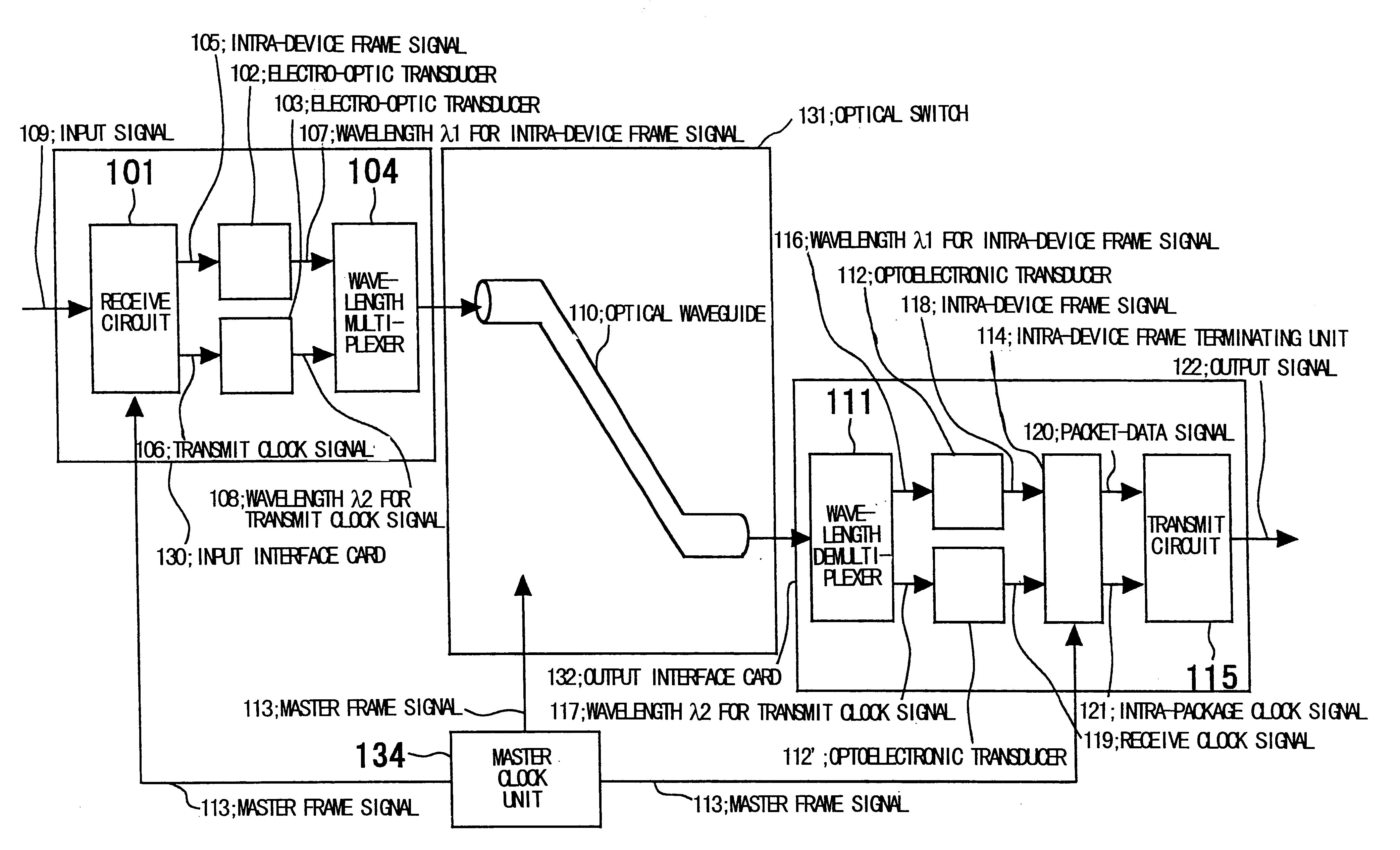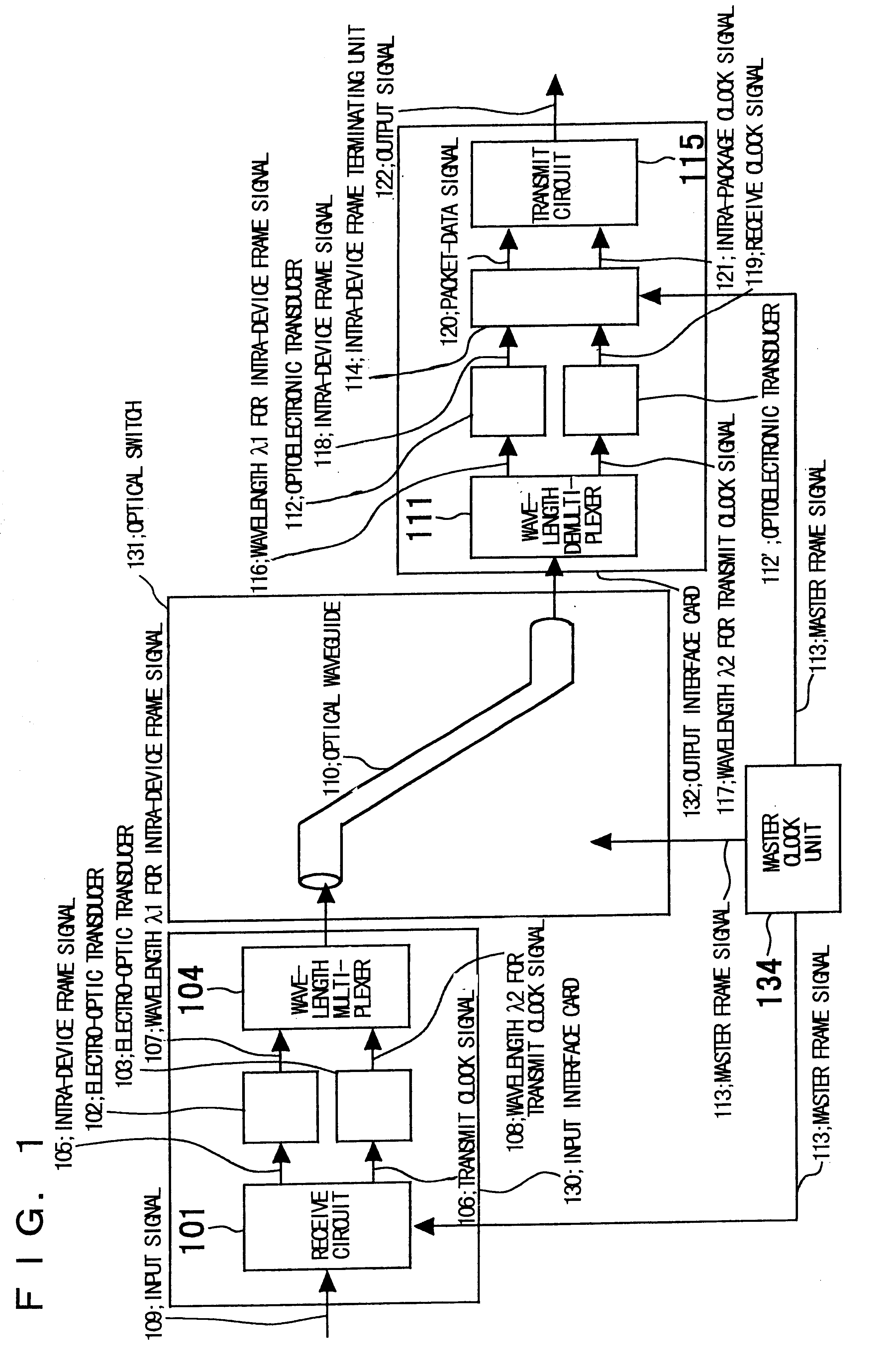Optical packet switch
a packet switch and optical switch technology, applied in data switching networks, synchronisation signal speed/phase control, multiplex communication, etc., can solve the problems of intra-package clock information capable of being received indiscriminately regardless, devices according to the prior art giving rise, etc., to increase the size and cost of the optical switch, the effect of increasing the size of the devi
- Summary
- Abstract
- Description
- Claims
- Application Information
AI Technical Summary
Benefits of technology
Problems solved by technology
Method used
Image
Examples
examples
FIG. 4 is a block diagram showing the overall system configuration of an embodiment of an optical packet switch according to the present invention. As shown in FIG. 4, this embodiment includes the input interface card 130, the optical switch 131, the output interface card 132, the master clock unit 134 and the packet scheduler 133.
FIG. 1 is a block diagram illustrating the principal components shown in FIG. 4. As shown in FIG. 1, the input interface card 130 includes the receive circuit 101 for receiving an input signal (an electric signal) 109 from a transmission line, extracting packet data from the payload of the frame, converting this packet data to the format of the intra-device frame, producing the intra-device frame 160 having a length equivalent to the master-frame period based upon the master frame signal 113 from the master clock unit 134, and outputting the intra-device frame signal 105 and transmit clock signal 106; the first and second electro-optic transducers 102, 103...
PUM
 Login to View More
Login to View More Abstract
Description
Claims
Application Information
 Login to View More
Login to View More - R&D
- Intellectual Property
- Life Sciences
- Materials
- Tech Scout
- Unparalleled Data Quality
- Higher Quality Content
- 60% Fewer Hallucinations
Browse by: Latest US Patents, China's latest patents, Technical Efficacy Thesaurus, Application Domain, Technology Topic, Popular Technical Reports.
© 2025 PatSnap. All rights reserved.Legal|Privacy policy|Modern Slavery Act Transparency Statement|Sitemap|About US| Contact US: help@patsnap.com



